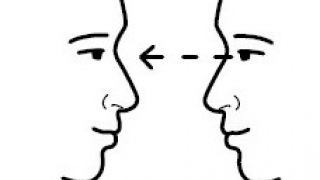
The eye contact can improve or break your speech. By using it right you can keep the audience more involved and interested about what you have to say.
Think this way- when do you feel more comfortable, when the interlocutor doesn’t make an eye contact with you and his eyes are wandering around the room or when while communicating his eyes are concentrated on you. The same answer can be transferred for the speakers in front of a numerous audience.
By using an eye contact, the speaker is keeping the audience interested about what he is saying and creates a connection to the audience. If you let your eyes wander around the room you can cause to yourself an additional feeling of nervousness and insecurity.
The eyes full of security send signals about how we feel at the moment. The direct friendly look toward someone shows interest and affection and long indifferent look send signals of suspicion and indifference. Just a bit the eye contact makes it clear that you are shy.
By looking at the audience you will be updated about its reaction for your speech. When once you find out the things the audience likes you can upgrade those areas and use tools for which you are sure that will have positive influence. This way you will also find out if the message you sent is heard properly.
In order to have effective presentation skills and to be sure that your message is really well transferred to your audience, you have to keep good eye contact. Also, the eye contact is a way to say thank you to the audience for their time and for listening to you. After all, nobody wants to listen to a speech by someone who seems like he doesn’t want to be there or is not interested in what he is saying.






